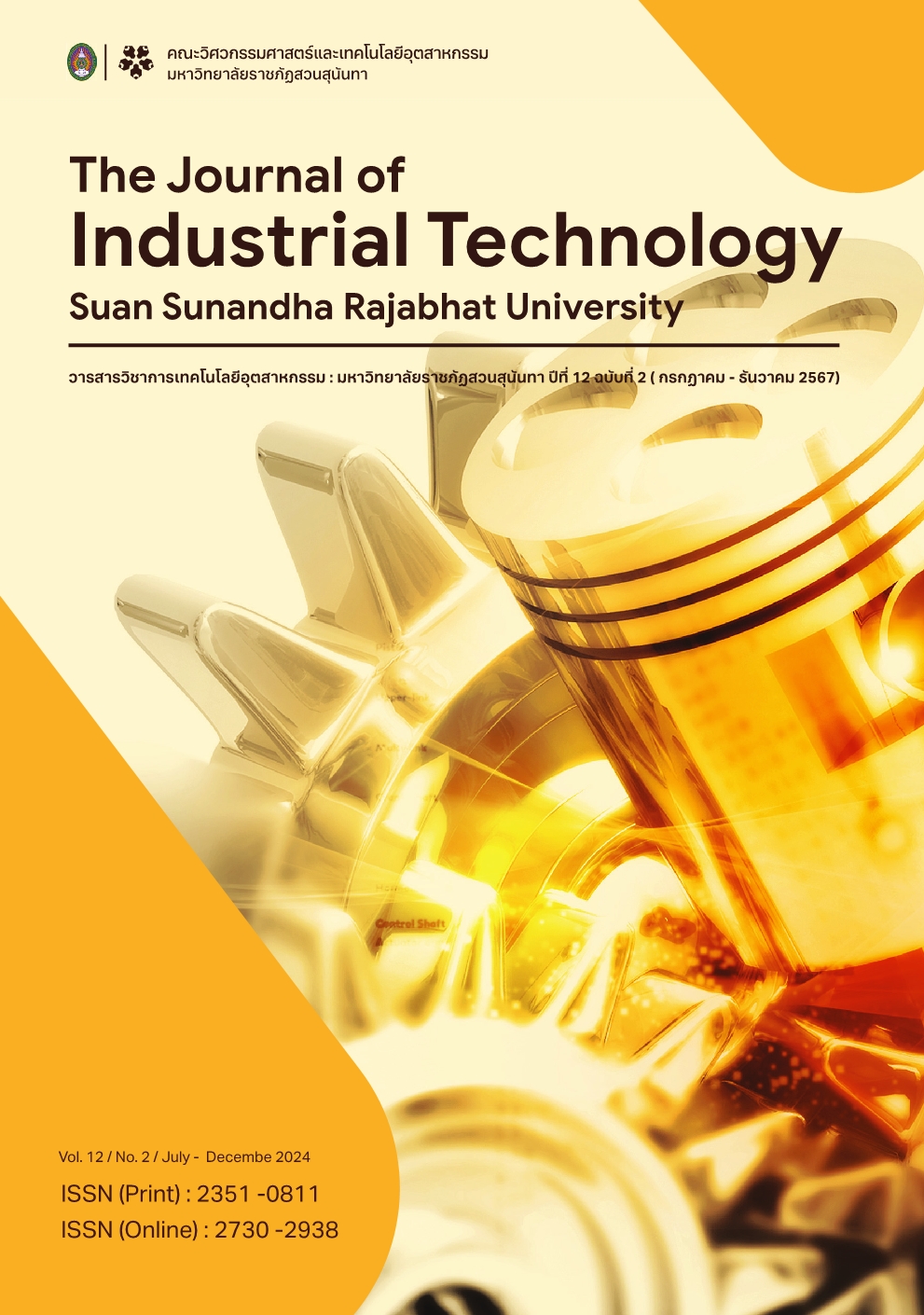Fracture analysis of the high-speed railway wheel due to changes in microstructure caused by the heat treatment process.
Keywords:
Wheel steel, Fatigue crack propagation, Ferrite, PearliteAbstract
This study investigates the fatigue crack propagation in high-speed railway wheel material, grade ER8, used in the Airport Rail Link in Thailand. Two case studies were conducted to examine the structure of railway wheel steel. First is conventional steel structure or the original structure of high- speed railway wheel, consisting of ferrite and pearlite phases. Second is the structure of high-speed railway wheel materials after heat treatment processes to simulate actual operating conditions. Changes in the microstructure of high- speed railway wheel occur, with an increase in ferrite phase and a decrease in pearlite phase. Mechanical properties were tested using ASTM E8 tensile testing standards and fatigue crack propagation resistance testing was conducted using Universal testing machine with a load of 5 kN at a frequency of 10 Hz following ASTM E647 standards. The results showed that the increase in ferrite phase led to higher elongation but lower tensile strength of the railway wheel material. Additionally, it decreased the ability to resist fatigue crack propagation.
References
V. Esslinger, R. Kieselbach, R. Koller and B. Weisse, “The railway accident of Eschede – Technical background,” Eng. Fail. Anal, vol. 11, Aug 2004, pp. 515-535.
X. Y. Fang, W. Huang, X. F. Yang and J. G. Wang, “Effects of temperature on fatigue cracks initiation and propagation T for a high-speed railway wheel rim steel,” Eng. Fail. Anal, vol. 109, Jan. 2020, p. 104376.
Y. Hu, L. Zhou, H. H. Ding, R. Lewis, Q. Y. Liu, J. Guo and W. J. Wang, “Microstructure evolution of railway pearlitic wheel steels under rollingsliding contact loading,” Tribology International., vol. 154, Sep. 2021, p. 106685.
R. M. Nejad and F. Berto, “Fatigue fracture and fatigue life assessment of railway wheel using non-linear model for fatigue crack growth,” Int. J. Fatigue, vol. 153, Aug. 2021, p. 106516.
D. F. C. Peixoto and P. M. S. T. De Castro, “Fatigue crack growth of a railway wheel,” Eng. Fail. Anal. vol. 82, Aug. 2017, pp. 420–434.
X. Ren, F. Wu, F. Xiao and B. Jiang, “Corrosion induced fatigue failure of railway wheels,” Eng. Fail. Anal., vol. 55, June. 2015, pp. 300–316.
Q. Zhang, I. Toda-Caraballo, Q. Lic, J. Han, J. Han, J. Zhao and G. Dai, “Tension-shear multiaxial fatigue damage behavior of high-speed railway wheel rim steel,” Int. J. Fatigue, vol. 133, Dec. 2020, pp. 105416.
X. Y. Fang, Y. X. Zhao and H. W. Liu, “Study on fatigue failure mechanism at various temperatures of a high-speed railway wheel steel,” Mater. Sci. Eng. A, vol. 696, Apr. 2017, pp. 299–314.
S. M. Johnson, A. J. Ramirez and A. Toro, “Fatigue crack growth rate of two pearlitic rail steels,” Eng. Fract. Mech., vol. 138, Mar. 2015, pp. 63–72.
D. Zeng, J. Wang, L. Lu, C. Shen, J. Guo, T. Xu and Z. Wanga, “Fatigue crack growth behavior of railway wheel steel modified by sulfides enveloping oxides inclusions,” Int. J. Fatigue, vol. 175, Jul. 2023, p. 107811.
J. Z. Chen, B. Zhang, L. R. Zeng, Z. M. Song, Y. Y. She and G. P. Zhang, “ Optimal bainite contents for maximizing fatigue cracking resistance of bainite/ martensite dual- phase 25CrMo4 steels,” Steel Res. Int, vol. 89, May. 2018, p. 1700562.
M. F. Borges, F. V. Antunes, P. Prates, R. Branco, J. M. VascoOlmo and F. A. Díaz, “Model for fatigue crack growth analysis,” Proc. Struct. Integrity, vol. 25, Jan. 2020, pp. 254–261.
Downloads
Published
How to Cite
Issue
Section
License
Copyright (c) 2024 Faculty of Industrial Technology, Suan Sunandha Rajabhat University

This work is licensed under a Creative Commons Attribution-NonCommercial-NoDerivatives 4.0 International License.
บทความที่ได้รับการตีพิมพ์เป็นลิขสิทธิ์ของคณะเทคโนโลยีอุตสาหกรรม มหาวิทยาลัยราชภัฎสวนสุนันทา
ข้อความที่ปรากฏในบทความแต่ละเรื่องในวารสารวิชาการเล่มนี้เป็นความคิดเห็นส่วนตัวของผู้เขียนแต่ละท่านไม่เกี่ยวข้องกับมหาวิทยาลัยราชภัฎสวนสุนันทา และคณาจารย์ท่านอื่นๆในมหาวิทยาลัยฯ แต่อย่างใด ความรับผิดชอบองค์ประกอบทั้งหมดของบทความแต่ละเรื่องเป็นของผู้เขียนแต่ละท่าน หากมีความผิดพลาดใดๆ ผู้เขียนแต่ละท่านจะรับผิดชอบบทความของตนเองแต่ผู้เดียว








